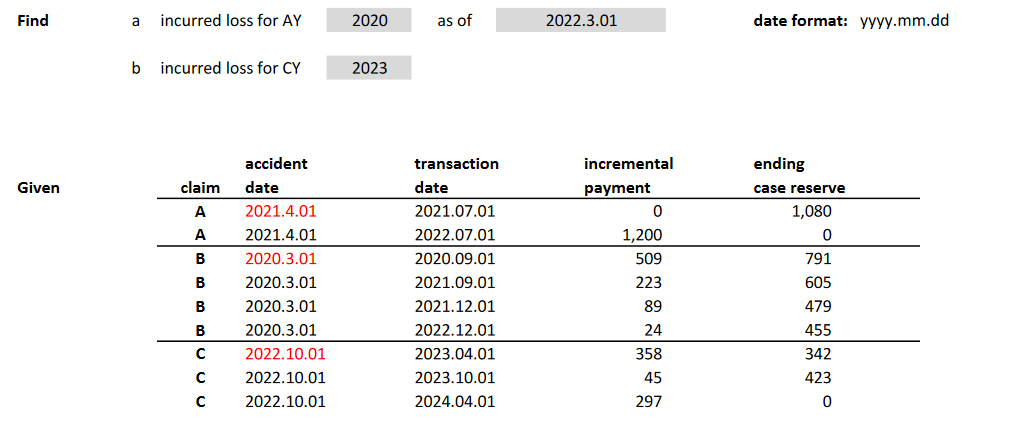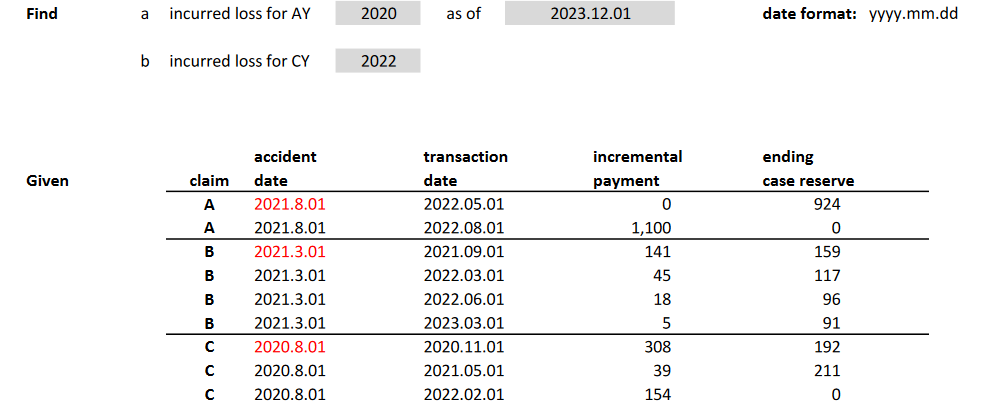4 claim aggregation problems (like 2017 Spring #3)
For these claim aggregation problems, my solution was a bit different than the one mentioned where you first calculate the change in reserves and then to get the incurred, you add the incremental and change in case reserve.
Instead, whether it was for the AY or CY I would add up the incremental payments and then just add the ending case reserve of either the "as of date" for AY or just the end of CY 2022. For example:
For part A, the incurred loss = 509 + 223 + 89 + 479 = 1300
For part B, the incurred loss = 358 + 45 + 423 = 826
This way seems to work for all the questions in the sample except for Problem #2b...
The way I would have gone about it for incurred loss CY 2022 = (1100 + 0) + (45 +18 +96) + (154) = 1413
Why is this not the case?


Comments
It's quite a coincidence that this was the only example where your method didn't work. To see why it didn't work, let's look at the contribution to the CY 2022 incurred loss from claim C. You wrote 154, but the correct value is -57 because:
The total contribution for claim C is then 154-211 = -59 as shown in my solution.
In your solution, you assumed the ending case reserve would always equal the change in case reserve for that year. That will not be true if there has been activity on a claim in a prior year. Note that claim B has the same issue. The case reserved dropped from 159 to 96 sometime during 2022 which is -63. (You incorrectly used 96.)
thank you for the explanation! I see my error now, I got confused with the reserving questions where we look at the ending case reserve in an accident year or report year and here we want to reflect the transactions in the calendar year and so we need to account for the changes in the case reserve as well.